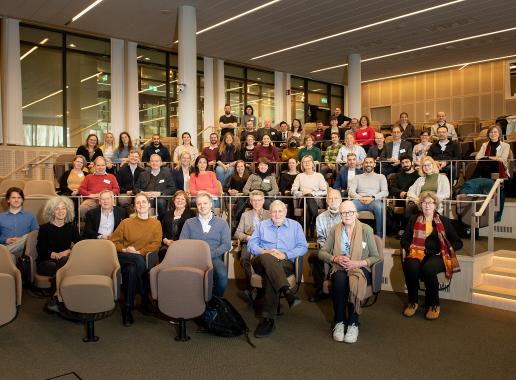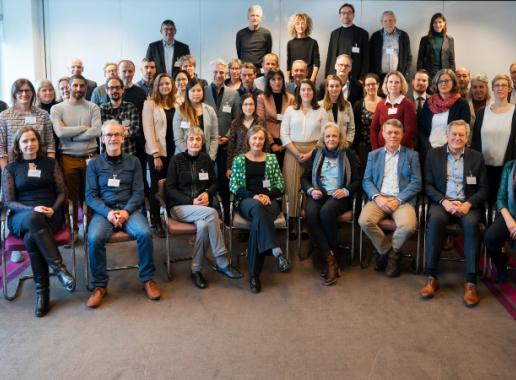Mental health issues have largely been neglected in environmental research, but pose an increasing public health problem in Europe. This is especially true for early childhood and adolescence, as these are vulnerable developmental phases. Thus, differential exposure to physical and/or social environments during childhood may have a profound impact on an individual’s health status as an adult.
The Equal-Life project is ambitious…
The Equal-Life project is as ambitious as it is large, comprising 20 partners from 11 European countries. Between 2020 and 2025, the consortium will examine birth-cohorts of over 250 000 children from seven different countries, as well as longitudinal school data sets and cross-sectional studies from four other countries. Equal-Life’s ultimate goal is to develop a toolbox that will help evaluate the effects of physical and social environmental exposure at different levels. Results will provide a basis for new policies to prevent and/or reduce negative mental health impact on children from preconception to adolescence.
...and focused on mental health and development in children
Mental health issues have largely been neglected in environmental research, but pose an increasing public health problem in Europe. This is especially true for early childhood and adolescence, as these are vulnerable developmental phases. Thus, differential exposure to physical and/or social environments may have a profound impact on an individual’s health status as an adult.
Equal-Life will be using data from exposures, effect markers and outcomes of mental health and social and cognitive developments. Additionally, the project will contribute to the development and the subsequent utilization of the exposome concept, by
- integrating external and social exposome with biomarkers of intermediate effects. Studying a distinct set of effects on (mental) child development;
- characterizing, measuring and modelling the child’s environment at different stages and settings;
- focusing on environments that support child development, rather than negative factors (such as pollutants) only;
- combining physical and social indicators with novel effect biomarkers and using new data sources describing child activity patterns and environments which are relevant for them.
...includes data from existing studies (> 250,000 individuals) and collects new data
Equal-Life uses data from existing birth-cohorts, longitudinal school data sets and cross-sectional studies (N=>250.000), including data on exposures, biomarkers, mental health and developmental outcomes, in their social context. Also, Equal-Life will collect new data on children.
...takes the following impacts as a point of departure:
- Equal-Life seeks to innovate internal and external exposure assessment and data management:
- With specific focus on restorative environments for children;
- The approach will combine aspects of early life physical environments with social aspects of the environment;
- Focus on the sound environment, other aspects relevant for restoration (blue light, access to green, variation) and resilience (household situation, parental styles) and distribution of these environments along the social and economic gradient.
- The data collection and management will be organized in such a way that for the purpose of research as well as policy new information can easily be included.
- Equal-life is aimed at mapping the environmental health promoting/risk factors of mental health and cognitive and social development:
- By mapping the environmental features which are relevant for restoration;
- By describing the biological, psychological and developmental pathways at different developmental stages and
- By studying early markers of disturbed mental, cognitive and social development.
- While accounting for environmental sensitivities (influenced by gene activities, previous disease, or social inequalities) to answer the question which vulnerable sub groups of children have specific problems?
- Resulting in a set of interventions for different life stages.
Language availability
This animation is also available with subtitles in Nederlands, Deutsch, Español, Italiano, Suomalaine, Svenska and Català.
Animation: About the Equal-Life project
Equal-Life: creating a healthier future for all children.
Before and after you are born, you feel, hear, eat, drink, see and breathe many things in your environment.
Inside the belly of your mother, the place where you are born, and the home where you grow up.
But it does not stop there.
Think about where you live, is there a lot of green space?
Are there many buildings around you, or many cars passing by?
And how is your social life?
Is your family big or small?
Do you feel cared for?
Do you feel safe?
Do you play with friends outside, or do you spend most of your time online?
Our environment contains things that interact with us and each other all the time.
Altogether, we call these things 'the Exposome'.
Remember the Green Park you like to play in?
This is part of your physical exposome.
And your friends in school?
They are part of your social exposome.
And you know what?
Our body and its functions can have an impact on your life too.
We call that the internal exposome.
The whole exposome influences our development and health, both positively and negatively.
This is what the project 'Equal-Life' is interested in: how the exposome affects the mental health and cognitive development of young people like you.
It is important to study this, because mental health challenges and difficulties in learning can have lifelong effects on young people's quality of life.
Also, the differences in health between people in Europe are growing.
This causes unfair differences in health and opportunities in the future for young people.
Equal life tries to understand how we can use knowledge about the exposome to make environments safer and healthier for them, instead of environments being a danger to young people's development and growth.
When we understand this relationship between the exposition and mental health and cognitive development, we can think of different ways to improve the environments of all children.
What do we need in order to do this?
We need information from children and young people in Europe about how they live, sleep, feel, eat, play and learn.
We also need researchers, cities, schools and health organizations to work together.
Equal-Life already has information for almost 250,000 young people from seven countries.
We will also collect new data in different countries and age groups.
Thanks to projects like Equal-Life, we will know better how to make living environments places where all children and adolescents will have equal opportunities and safeguard their future health.
We aim to create a healthy environment for young people.
Learn more about the project at: equal-life.eu or email us directly at: info@equal-life.eu.




